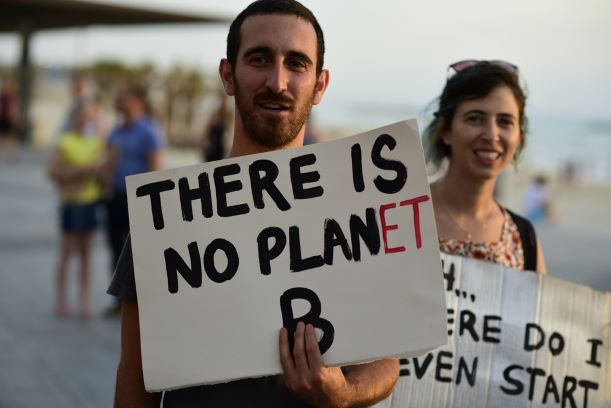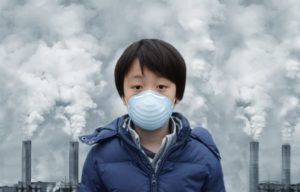A Peek into the Rise of The Green Movement Globally

Nordic nations, known better perhaps for their gender equality moves, have been equally aggressive on active environmentalism. Today, be it recylcling waste, adoption of electric vehicles, transitioning to a renewable energy grid, you will be hard pressed to find any top lists without countries from the region. Sweden gets points for relatively low carbon emissions and a highly efficient recycling system—in fact, Sweden is so good at recycling it has to import garbage to keep the recycling plants going. The country’s goal of shifting to 100 percent renewable energy by 2040 is laudable and on track. While the Netherlands has one of the toughest Climate change law with the most stringent greenhouse gas reductions of at least 25% by 2020 – measured against 1990 levels – higher than the 17% drop planned by Mark Rutte’s liberal administration.

The European Union overall has been a good performer as well with being environmental-friendly. Belgium leads with Coordination between a complicated federal political system divided by regions is a challenge, but the country as a whole is committed to the EU’s target to cut 1990 carbon emission levels by 20 percent by 2020—and has started by shutting down the last of its coal-powered power plants. The Portuguese government has also focused on creating green jobs and revamping its energy system—and it’s paid off. A government-led “Commitment to Green Growth”sees the country promoting the “low-carbon economy” and investing in sustainability efforts across industries and territories. Luxembourg is one of the best-performing in dropping its share of carbon emissions. Between 2015 and 2016, it reported a 4% drop in CO2 emissions from fossil fuels. It shows that its commitment to a 20 percent greenhouse gas reduction over the course of just five years—the most ambitious goal of any UN member state—is more than just words.
But there is a struggle too. Infighting has been seen in many countries. As always, it is a sector to protect, or a natural resource like coal that is too attractive to miss out using.
Also Read: Part 1: Whether environment will be a key issue during the coming general elections?
Germany
Take Germany which is faulting in its emissions commitment, its cities and environmental footprint is increasing again. It aimed at a 40 percent reduction in carbon dioxide (CO2) emissions between 1990 and 2020. But emissions will not reach the target, having stalled at 73 percent of the 1990 level since around 2010 and even increased in many regions.
Key Takeaway: Clearly, many forces are responsible for the failure of Germany’s climate policy. One important factor is demography. Intake of the immigrating population(around 3 million till 2016) combined with a boom in fertility rates in Germany has had an adverse effect on the environment. More population means more pressure on Land and resources, which translates into sprawling urban spaces. Likewise, the more the population grew, the higher the rate of CO2 emissions from fossil fuel combustion rose. And when you have an auto industry whose strength is technology using fossil fuels, foot dragging was bound to follow.

France
Like Germany, France too had been a frontrunner in fighting the climate change and become a pioneer in clean energy. But the year 2018 has been turbulent times for the French. Climate Action has always been on top of President Emmanuel Macron’s agenda. His decision to propose an increase to the carbon tax — which was initially to ensure the country’s commitment to reduce greenhouse gas emissions by 40 percent — has faced large-scale opposition from the general public. Yellow vest protests have mopped the nation as many as 6 times already. They want the French government to tax big emitter like the aviation fleets or the big industries according to “polluter pay principle”.
Key Takeaway: The snowballing French protests, triggered by a carbon tax on fuel, point towards the problems of such gatherings and of those faced by any global deal on climate change. So in such a situation governments can do well if they actively sell policies designed to combat climate change. Preferably, they should do this before introducing them, clearly framing their objectives and outlining what citizens stand to lose and gain.
The UK
Climate change has been a subject of protest and controversies in the country. Various policies have been developed to mitigate its effects but those policies do not add up to a comprehensive solution. The UK Government has a commitment to reduce CO2equivalent emissions by 50% on 1990 levels by 2025 and by 80% on 1990 levels by 2050 against the demanded 80-85% emission reductions in the EU during 2008-2050.

The Labour government wants to oversee an economic revolution to tackle the climate crisis. The party’s current target is to get 60% of the UK’s energy from renewable sources by 2030 and to reduce greenhouse gas emissions to zero by the middle of the century. Young activists, who will be forced to live with the ravages of climate change and more recently restart of Fracking for shale gas, want more to be done.
Read: UK Takes a U-Turn on Fracking Ending 7-Year Moratorium
Key Takeaway: The Environmentalists have proposed a plan of their own. It’s called the Green New Deal (GND) inspired by the US. The activists who are still working its kinks say that it is a massive program of investments in clean-energy jobs and infrastructure, meant to transform not just the energy sector, but the entire economy. It is meant both to decarbonize the economy. The deal talks about “blue-green alliance” between labor and environmentalists. The Labor party wants to:
- increase the UK’s installed offshore wind capacity sevenfold
- bring all 24m homes in the UK up to the highest efficiency standard
- triple the UK’s installed solar capacity
The US
Trump administration’s world-renowned denial of Climate Change and its imminent dangers was the talk of the town in 2018 and his pro-coal and the recent opening of reserved forest areas of untouched Alaskan Arctic reserve for oil drilling. The government estimates put a figure of 8.7 billion barrels of oil and 25 trillion cubic feet of gas in that area. Let’s not forget Fracking incidents and lead poisoning. The drought-like situation in most of the west coast has had Americans worried as well as climate conditions like in Washington which is frozen in this time of year. Since then, voices of change has been heard in California, New York and administration. Directors of the Overseas Private Investment Corporation, or OPIC, a federal agency that invests private funds, approved $150 million for an enormous wind farm in Ukraine, along with $250 million in political risk insurance. The sunny Cali, which is run by opposition democrat like Gov Brown and New York under Michael Bloomberg.

Twenty of the 50 states, some hundred cities and a thousand companies have already set targets for reducing the greenhouse effect, according to America’s Pledge, an initiative launched by former New York mayor Michael Bloomberg and the California Governor Jerry Brown.
California on its own is responsible for about the same amount of greenhouse gases as France, and is gunning for a 40 percent reduction in its emissions by 2030 compared to 1990 levels, targets as ambitious as the EU’s. But sadly, these 20 states contribute only 35% of the GHGs of the entire country. Texas, the biggest polluter, is not the part of the movement.
Read: US University Report provides Water Cannon to Anti- Fracking Brigade
Key Takeaway: Vehicle emissions standards, which Trump is seeking to change, are a good example. If California and the ten states in the country’s northeast that account for 40 percent of all domestic light-duty vehicle sales continue to impose tighter controls, it’s likely that automobile manufacturers will adhere to the stricter standards rather than create a two-tier market. Solar Panels, whose prices have hit rock bottom, will continue to attract consumers to become prosumers in the coming year. Tesla vehicles which crossed the sales figure of ICE vehicles in the US, is also an encouraging trend.
Here outlook gets murkier, if the US climate alliance, do meet the strict emission norms, the fall will be just 18% by 2025. By contrast, emissions from sectors like buildings, heavy industry and agriculture are hardly expected to decline at all. These sectors are expected to make up more than 60 percent of alliance states’ emissions by 2025. So the involvement of all states in the economy is imperative.
China
The world’s top polluter is also the pioneer in the adoption of clean energy sources. China installed 34.5 GW of solar PV capacity in the first nine months of 2018. India, which stands on the second position, is well behind China as the second largest installer of solar capacity in the world, with capacity additions of 6.6 GW in the same period. The country’s solar installations’ exports may cool off in 2019 due to a trade war with US. But the state reached its 2020 carbon emission target three years ahead of schedule with the help of the country’s carbon trading system in 2017. China had cut carbon dioxide emissions per unit of GDP by 46 percent from the 2005 level, fulfilling its commitment to reduce carbon emissions by 40 to 45 percent from the 2005 level by 2020. The amount of carbon emissions per unit of GDP- dropped by 38.6 percent.

Key Takeaway: Although China’s emissions stayed flat between 2013 and 2016, they rose again by an estimated 5% in 2018. About 70% of China’s emissions come from electricity generation and industry, including both manufacturing and construction. Local governments took advantage of a decentralized permit system to develop 259 gigawatts of new coal capacity – roughly equivalent to all the power currently generated by U.S. coal plants. Mired in a trade war with the U.S. and concerned about a slowing economy, China could engage in more fiscal stimulus in 2019. That would boost energy consumption – and emissions. Therefore, EIA (US govt agency) suggests that China, to meet its target, must rapidly shift to a service-based economy. It can reduce the amount of energy it uses by five quadrillion British thermal units by 2040, an amount roughly equivalent to what Spain consumes annually.
On a lighter note, there are good examples of policy moves too. One such interesting examples is in Canada, where the new federal backstop carbon tax imposed on fuel will soon come into effect. It will start at $20 per ton of emissions in 2019 and rise by $10 every year to $50 per ton in 2022. What might make the tax bearable – even attractive – to Canadians is the way it is set to work. About 90 percent of the revenue raised will go straight back to citizens as “climate action incentive” payments. According to Canadian government estimates, roughly 70 percent of citizens will get more in rebates than they will pay in taxes. From next summer, people will receive tangible proof – a cheque in the mail – making carbon-cutting policies a pain-free and personally beneficial exercise.

The Canadian scheme may be pioneering in terms of scale, but the idea is hardly new. Switzerland’s incentive tax on hydrocarbon fuels has returned two-thirds of its receipts to households and businesses for 10 years.
Of late, the notion of incentivizing a low carbon footprint by paying people to consume less energy has been gaining ground. In April, researchers at the Massachusetts Institute of Technology and the National Renewable Energy Laboratory in the US recommended putting a price on carbon and returning the generated revenue to the public in one form or another.





